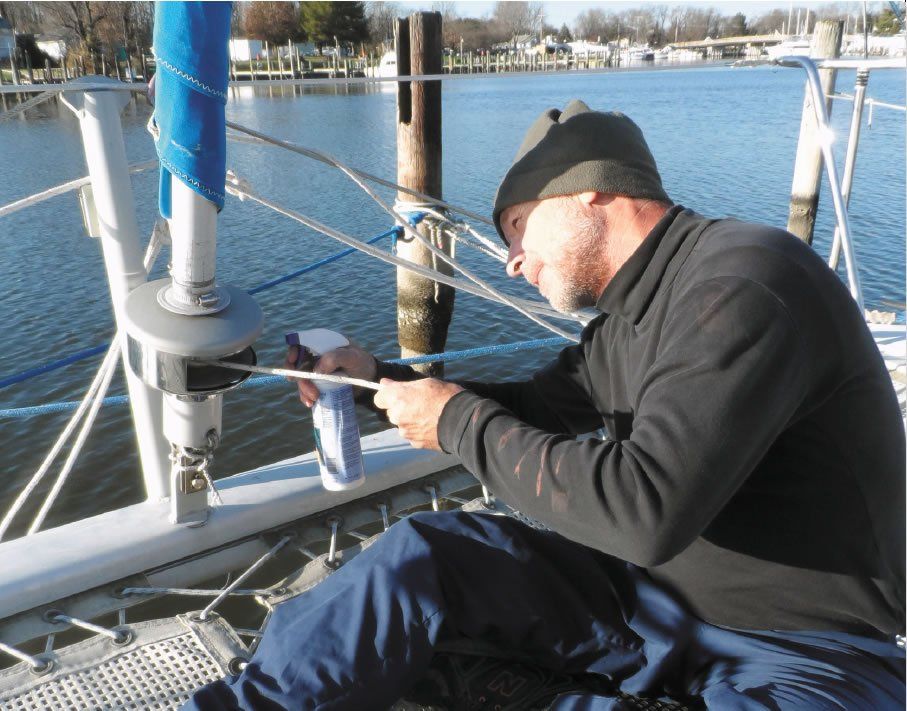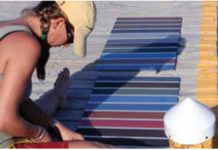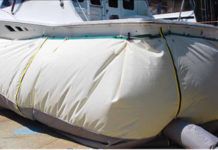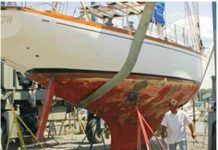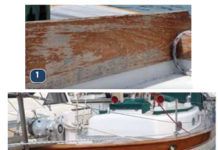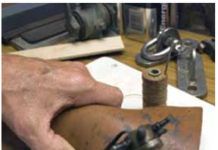Semi-Annual Antifouling Paint-Test Checkup
Practical Sailor continues its search for the best antifouling as we test a large field of bottom paints, including products from Pettit, Blue Water, Epaint, Interlux, and Sea Hawk. In this report, we rate the paints' eight-month and two-year performances. Some budget-friendly and eco-firnedly paints were still doing quite well after a season in the drink. When we last checked in on bottom paints in the March 2011 report, the ban on copper in antifouling paints was on the docket in Washington state and California. As the movement to ban copper moves eastward, the bottom paint industry is in flux, with manufacturers reducing the amount of copper in bottom paint and trying new copper-free paints. Bottom paint will probably not decrease in price, or increase in effectiveness, in the next few years.
Rating Paint Panels
The paint samples were applied to 6-foot-by-2-foot fiberglass panels for testing. Testers follow the makers’ instructions for preparation and application. There were 11 samples per test panel. All but four samples had two coats of paint.
Baked-on Prop Coating Still Repelling Barnacles
Last November, we began field trials of Mussel Buster, a baked-on powder coating that relies on its slick, hard coating to prevent barnacles from adhering. After six months, the prop was surprisingly clean. A few small barnacles had appeared, but they wiped away easily with the sweep of a hand.
Sodablasting 101
When deciding on a process for clearing antifouling paint and coatings off the bottom of your boat, first define your goals and try to be as minimally invasive as possible. If your boat bottom needs more than a scrubbing but less than a full peel, sodablasting is a technique that will strip bottom paint but leave gelcoat intact. The unique softness of the calcium carbonate powder in sodablasting is effective, and the tented setup keeps the old coating contained. This report outlines the sodablasting process, calculates the cost in time and money, and compares its performance and cost-effectiveness to other bottom-stripping techniques we've tested.
A Mathematical Decision-maker
An easy way to compute the do-it-yourself labor commitment involved is by timing how long it takes to scrape clean two 1-square-foot patches. The first is in the center of the least well-adhered paint; the second is in the midst of an intact portion of the bottom. Dry scrape each section with a thin-bladed putty knife and a sharp drag-type scraper, noting the time it takes to remove about 90 percent of the coating.
Past Adventures with Chemical Strippers
Our foray into sodablasting follows years of testing several different ways to remove bottom paint. Although you can simply attack the bottom paint with a power sander (an 8-inch sander-polisher is probably the most common tool for this purpose), this approach is messy, back breaking, and can expose the do-it-yourselfer to various health hazards. It can also lead to dings and divots in the gelcoat caused by overzealous sanding. Many yards prohibit do-it-yourselfers from sanding antifouling, or offer specific guidelines on how it can be carried out-often prescribing a chemical stripper to help contain the paint residue.
The Best Marine Varnish: Exterior Wood Finish Tests
Testers applied dozens of exterior wood finishes (22 one-part varnishes, six two-part varnishes, 18 synthetics and satins/varnish alternatives, and eight teak oils and sealers) to small panels of bare solid teak and set them out to face the rigors of South Florida's weather. Two years later, our search continues for the ideal wood finish-relatively easy to apply, easy to maintain, lasts multiple seasons, and is affordable. Given that most wood coatings are rarely expected to last longer than two years in the marine environment-particularly in super-sunny locales-its no surprise that weve seen more significant changes in the coatings in the last six months than we had in previous checkups. With the exception of a few two-part products, the test coatings had lost their sparkle at the two-year mark, ratings slipped across the board, and weve come to accept that perhaps theres no Holy Grail of exterior wood finishes.
Whey Overdue for a Recoat
Practical Sailor often supplements panel testing with product challenges aboard our test boats to see whether top products still earn their keep in the real world and to try out new products. Two such evaluations are our exterior wood finish tests. In the January 2011 issue, we introduced a head-to-head matchup of varnish alternatives—market-newcomer PolyWhey from Vermont Natural Coatings versus perennial favorite Interlux’s Sikkens Cetol Natural Teak—that had been applied to our Cape Dory 25 test boat. For that test, we’ve just let nature run its course: no band-aid touchups, no maintenance coats, no freshwater rinses, no TLC at all.
Old Salt’s Anti-chafe Solution
Being a team of diehard do-it-yourselfers, we decided to try our own hand at devising a workable solution to defeating line chafe. After fiddling with canvas, old fire hose, and even messing around with some Kevlar, we settled on leather—an old rigger’s standby. It proved to be rugged and remained unholed after a ride on the belt sander. The fabrication process was kids craft 101, and there was something quite seafaring about the result. …
Old Salts Anti-chafe Solution
Being a team of diehard do-it-yourselfers, we decided to try our own hand at devising a workable solution to defeating line chafe. After fiddling with canvas, old fire hose, and even messing around with some Kevlar, we settled on leather—an old rigger’s standby. It proved to be rugged and remained unholed after a ride on the belt sander. The fabrication process was kids craft 101, and there was something quite seafaring about the result. …



































